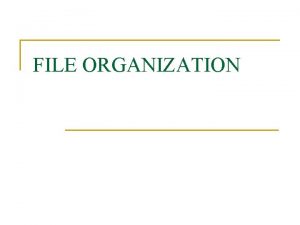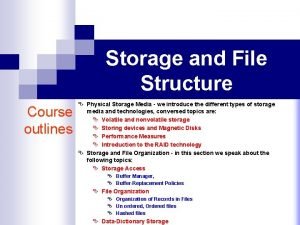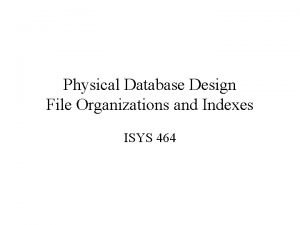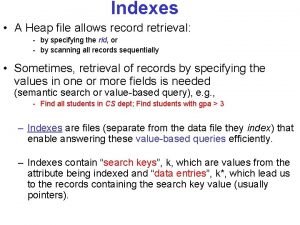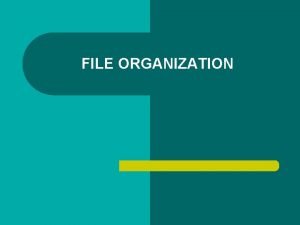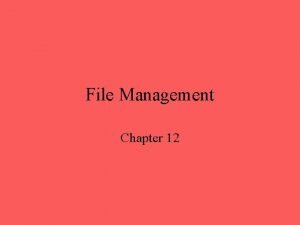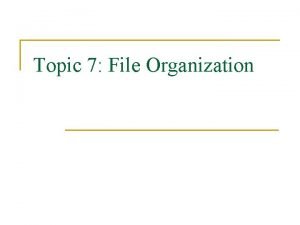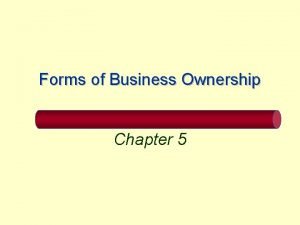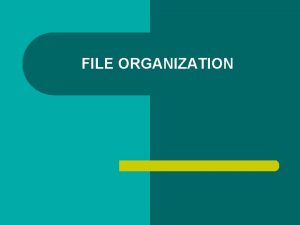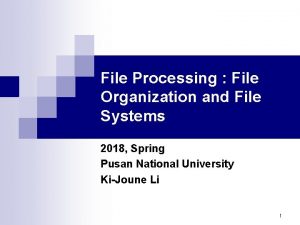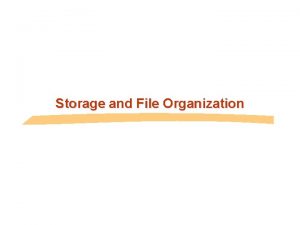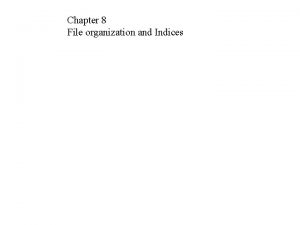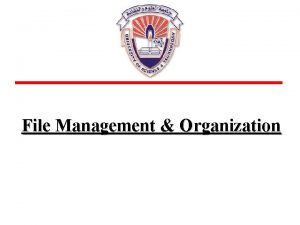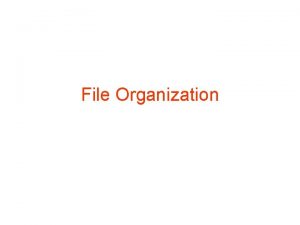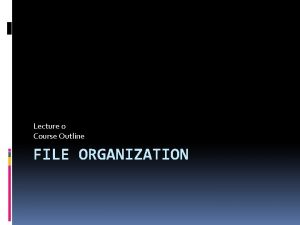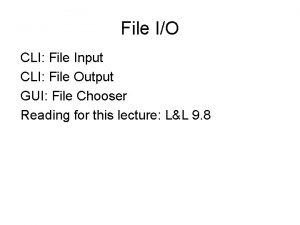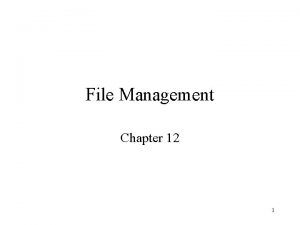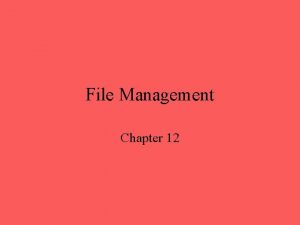FILE ORGANIZATION TYPES OF FILE ORGANIZATION l l

















- Slides: 17

FILE ORGANIZATION

TYPES OF FILE ORGANIZATION l l Serial Sequential Indexed Sequential Direct Access /Random Access

Serial File Organization l l l A collection of records No particular sequence Cannot be used as master Used as temporary transaction file Records stored in the order received

Sequential File Organization l l A collection of records Stored in key sequence Adding/deleting record requires making new file Used as master files

Sequential file

Advantages l l Simple file design Very efficient when most of the records must be processed e. g. Payroll Very efficient if the data has a natural order Can be stored on inexpensive devices like magnetic tape.

Disadvantages l l l Entire file must be processed even if a single record is to be searched. Transactions have to be sorted before processing Overall processing is slow

Direct (Random) File Organization l l l Records are read directly from or written on to the file. The records are stored at known address. Address is calculated by applying a mathematical function to the key field.

Direct (Random) File Organization l A random file would have to be stored on a direct access backing storage medium e. g. magnetic disc, CD, DVD l Example : Any information retrieval system. Eg Train timetable system.

Advantages l l Any record can be directly accessed. Speed of record processing is very fast. Up-to-date file because of online updating. Concurrent processing is possible.

Disadvantages l l l More complex than sequential Does not fully use memory locations More security and backup problems

Indexed sequential file l l Each record of a file has a key field which uniquely identifies that record. An index consists of keys and addresses. An indexed sequential file is a sequential file (i. e. sorted into order of a key field) which has an index. A full index to a file is one in which there is an entry for every record.

Indexed sequential file

Indexed sequential file l Indexed sequential files are important for applications where data needs to be accessed. . . – – sequentially randomly using the index.

Indexed sequential file l An indexed sequential file can only be stored on a random access device e. g. magnetic disc, CD.

Advantages l l Provides flexibility for users who need both type of accesses with the same file Faster than sequential

Disadvantages l Extra storage space for the index is required
 File-file yang dibuat oleh user pada jenis file di linux
File-file yang dibuat oleh user pada jenis file di linux Random access file organization
Random access file organization Physical image vs logical image
Physical image vs logical image File sharing management system
File sharing management system Distributed file system
Distributed file system What does a markup tag tells the web browser
What does a markup tag tells the web browser In a file-oriented information system, a transaction file
In a file-oriented information system, a transaction file File organization course
File organization course File organization and database design
File organization and database design Heap file organization
Heap file organization Indexed sequential file organization
Indexed sequential file organization In file organization a fixed format is used for records
In file organization a fixed format is used for records Indexed sequential search
Indexed sequential search Process organization in computer organization
Process organization in computer organization Point-by-point organization
Point-by-point organization Montaj maksud
Montaj maksud Types of span of control in organization
Types of span of control in organization Are hybrids worth it
Are hybrids worth it

